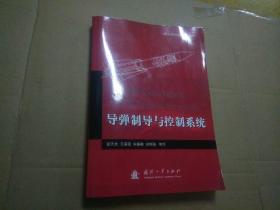
Financial Fine Print 财务细则
Michelle Leder在过去的15年里一直在撰写个人理财和投资方面的文章,其中有10年时间是作为一名商业记者,后来成为纽约、佛罗里达和康涅狄格州日报的编辑。作为一名过去五年的自由记者,她的文章经常出现在《纽约时报》以及其他几十种出版物上,吸引了各种年龄和收入水平的人。此前,她是LifetimeTV.com的金钱和职业页面的个人理财专栏作家。
¥ 380 8.0折 ¥ 477 九五品
仅1件
送至北京市朝阳区
运费快递 ¥8.00
作者Leder, Michelle
出版社Wiley
ISBN9780471433477
出版时间2003-09
印刷时间2003-09
印数1千册
装帧平装
开本32开
纸张轻型纸
页数192页
字数1千字
定价477元
上书时间2023-02-19
评价398好评率 100%
- 在售商品 暂无
- 平均发货时间 36小时
- 好评率 100%
- 店主推荐
- 最新上架
商品详情
- 品相描述:九五品
- 作为一名日报记者,她赢得了许多奖项,包括商业编辑和作家协会享有盛誉的最佳商业奖,以及在纽约、佛罗里达和康涅狄格州举行的年度美联社竞赛中的许多奖项。她拥有马萨诸塞州沃尔瑟姆的布兰代斯大学的经济学学位,与丈夫斯科特和爱犬鸠摩罗王住在纽约州的皮克斯基尔。这是她的第一本书。关于阅读金融脚注的更多信息可在www.footnoted.org获得,或联系ml@footnoted.org的米歇尔·莱德。
- 商品描述
-
作者: Leder, Michelle
出版社: Wiley (2003年09月08日)
页数: 192页
ISBN: 9780471433477
条形码: 9780471433477
商品重量: 0.46g
商品尺寸: 24.18cm * 15.70cm * 1.96cm
内容简介
Thirty-five million individual investors jumped into the stock market for the first time during the late 1990s without asking questions about the stocks they were buying. When the bubble burst and the large number of accounting scandals began to grow, most investors didn't know where to turn or whom to trust. Now it has become more important than ever for investors to take matters into their own hands.
Financial Fine Print: Uncovering a Company's True Value lets individual investors in on the secrets that seasoned professional investors use when they evaluate a potential investment. Buried deep in a company's quarterly (10-Q) and annual (10-K) reports are the real clues to a company's financial health: the footnotes. At many large companies, these footnotes can run for more than 30 pages and for some corporations have doubled in the past five years, making them simply too important for investors to ignore.
Financial Fine Print spells out exactly what investors need to look for within the footnotes of a company's reports in order to make better, more informed decisions. By using numerous examples of actual footnotes that have appeared in SEC documents, the book teaches investors in easy-to-understand language ways to spot - and avoid - future Enrons and Worldcoms (and Tycos and Adelphias and HealthSouths). For any investor who has spent the past three years watching their investments shrink and has begun to think about getting back into the market, this book provides the critical tools that investors need to know to avoid getting burned once again.
内容推荐
Always read the fine print. It's one of life's basic maxims, and for the individual investor, still smarting from recent market meltdowns, the saying goes double. Too many claims of miraculous earnings have been revealed as accounting mirages, with small shareholders among the biggest losers.
Prudent investors want the whole story, not just the rose-colored version of events that managers tend to portray. Yet how do you uncover it, given the huge amount of available information? The trick is simply knowing where and how to look.
Financial Fine Print is a great place to start. Written by veteran financial journalist Michelle Leder, this book lays bare the accounting tricks companies use to whitewash their numbers. Using a clear, no-nonsense style and pointing out numerous scandals and red flags, Leder sheds light on the most obscure yet most essential aspect of annual reports and SEC filings: the footnotes.
With the knowledge and techniques detailed in Financial Fine Print, you'll learn:
Why one number buried deep within the pension footnote can speak volumes about whether the company's other numbers are trustworthy
What sorts of insider transactions investors need to pay close attention to
Where companies tend to hide their debt and other obligations
How some companies seem to take special charges every quarter and how that impacts the bottom line
When to avoid a stock because the red flags are simply too numerous
Too many companies would prefer that you not read the footnotes, notes former SEC Chairman Arthur Levitt. That should be incentive enough to delve into them. As investor skepticism builds and the specters of Enron, Worldcom, Adelphia, and Global Crossing loom large, companies trying to prove themselves above-board have added more footnotes and documentation than ever to their reporting. This makes learning the lessons of Financial Fine Print all the more important. Because the simple fact is that if you want to own individual stocks, you need to do your homework.
为你推荐

毛泽东选集1-4卷,北京一版,北京一印,难得没有签名,没有钦印,给你可以发挥的机会和空间!
九品石家庄
¥6988.00

孤星之旅:苏东坡传
九五品邢台
¥77.00

八部金刚功
八品上海
¥78.00

导弹制导与控制系统(正版品好)
九五品上海
¥770.00

台湾三民版 祝平一《说地:中国人认识大地形状的故事》(锁线胶订)2003年版
全新北京
¥40.00

飞鸣镝--中国地空导弹部队作战实录 品好【北4】
九五品衡水
¥160.00

毛主席论无产阶级专政下继续革命
六五品聊城
¥9.80

聊斋志异评赏大成 上下
九品菏泽
¥600.00

导弹与航天技术概论
全新哈尔滨
¥29.20

导弹与导弹防御武器
全新广州
¥44.45

伊甸之东(诺贝尔文学奖得主、《愤怒的葡萄》作者斯坦贝克自己蕞满意的史诗级杰作)
九品北京
¥25.00

台湾东大版 钱穆《中国历史研究法(三版)》(锁线胶订)
全新北京
¥52.00

《地空导弹》
八五品葫芦岛
¥29.00

那个不为人知的故事
九品北京
¥600.00

伪满洲国上下
八五品重庆
¥38.00

毛主席诗词三十七首 集黄善夫刻史记字
九品淄博
¥288.00

黄帝内经·胎育智慧
全新遂宁
¥11.47

中华道教大辞典
八五品银川
¥1388.00

地空导弹发射系统及其技术(第2版)
全新成都
¥52.20

地空导弹系统技术(高等学校教材)【无笔记】
九品北京
¥75.00
— 没有更多了 —
微信扫码逛孔网
无需下载
















好
OK